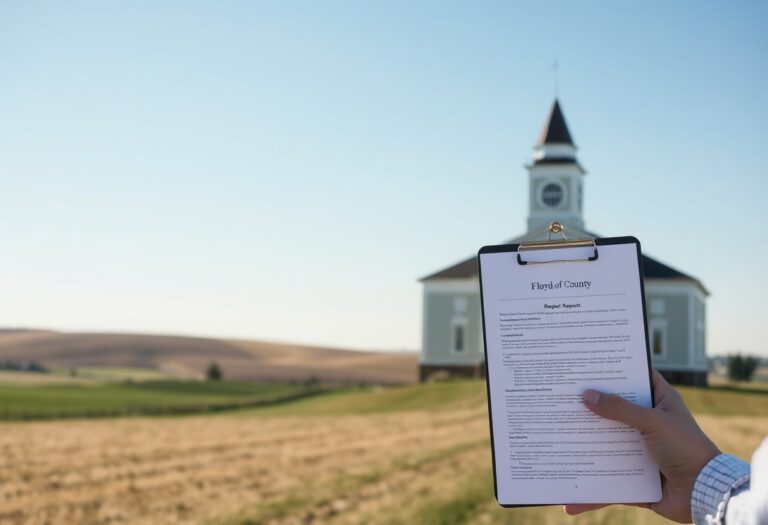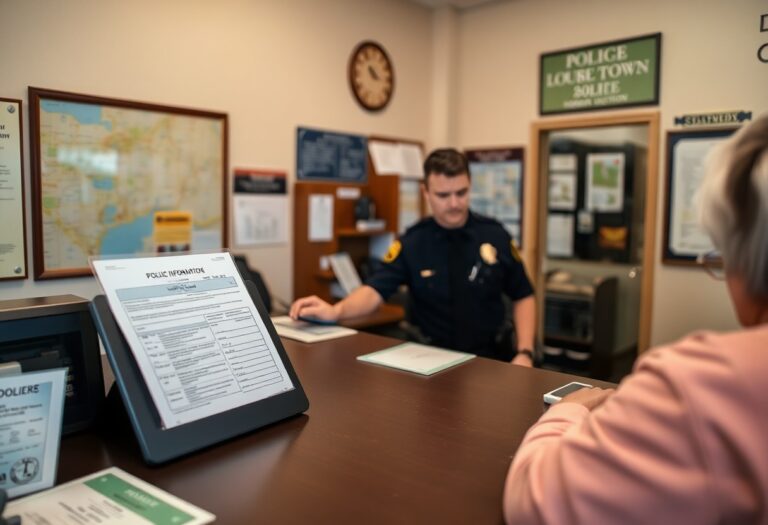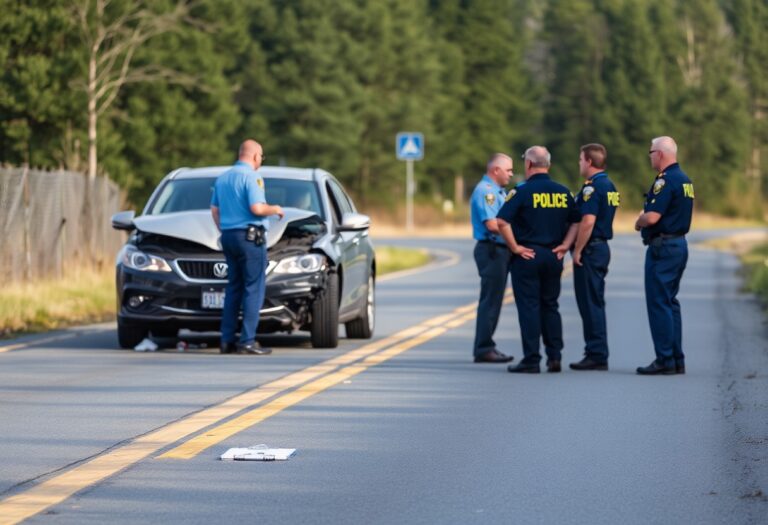You may find yourself needing your car accident report after an unfortunate incident in Atascosa County, Texas. This document is vital for processing insurance claims, understanding your rights, and ensuring you receive the compensation you deserve. In this guide, you will learn the step-by-step process to secure your report effectively and efficiently, making the experience less stressful. We’ll cover the necessary contacts, forms, and where to submit your requests to ensure you have everything you need to navigate this important procedure safely.
Navigating the Aftermath of a Car Accident
After a car accident, clarity becomes important for your peace of mind and for managing any potential claims. The emotional and physical toll can be overwhelming, but staying organized and informed aids in navigating this challenging time. Properly addressing the immediate aftermath allows you to gather the necessary information and pursue any required legal actions without additional stress.
Immediate Steps to Take Post-Accident
Assessing your safety and the safety of others involved should be your top priority. If you can do so, move to a safe location away from traffic and check for injuries. Contact emergency services if anyone is hurt, and file a report with the police, documenting the details of the accident properly. Ensure that vehicles are marked and secured to prevent further mishaps.
Key Information to Gather from Involved Parties
Your ability to resolve any issues stemming from the accident hinges on collecting detailed information from everyone involved. This includes names, contact numbers, and insurance details of all drivers, as well as a description of the vehicles and license plate numbers. Gathering witness statements can also bolster your case.
Pay close attention to the insurance information, including policy numbers and contact details. You should also write down the time, date, and location of the accident as well as any road conditions or weather factors that may have played a role. Creating a comprehensive account allows you to present a well-rounded perspective to insurance companies or legal entities. Obtaining a copy of the police report will further enhance your documentation, creating a clearer picture of the incident for all parties involved.
Decoding the Car Accident Report Process in Atascosa County
Navigating the car accident report process in Atascosa County requires an understanding of how reports are generated, what they contain, and how to access them. Once the accident occurs, law enforcement officials will typically respond to the scene and begin gathering necessary information. From there, a comprehensive report is compiled, which serves as a critical document for insurance claims and legal proceedings. This report can provide insights into the circumstances surrounding the accident and aid both parties in resolving disputes.
Understanding Who Generates the Report
In Atascosa County, local law enforcement agencies, such as the sheriff’s department or city police, are responsible for generating car accident reports. Officers on the scene collect data from involved parties, witnesses, and physical evidence to complete the report accurately. Depending on the severity of the accident, additional investigators may also be involved, particularly if there are injuries or significant property damage.
Knowing What Information is Included
Your car accident report will typically include details such as the date, time, and location of the accident, the names of drivers and witnesses, vehicle information, and a description of the accident dynamics. Additionally, the report might contain preliminary assessments of fault, statements from witnesses, and any citations issued to drivers. This document thus encapsulates facts that can prove vital for subsequent legal or insurance processes.
Specifically, the report often features diagrams illustrating the positioning of vehicles post-accident, conditions of the road, and various observations made by officers. It may also include information about any injuries sustained, damage to vehicles, and any traffic laws that may have been violated. All these elements contribute to a holistic understanding of the incident, providing not only an account of what transpired but also supporting evidence for any claims you may need to file.
The Ins and Outs of Requesting Your Report
Requesting your car accident report entails a few straightforward steps that can help you gain access to critical information for your case. Start by determining whether your report is available online or if you must visit the local law enforcement office in person. Understanding the nuances of this process allows you to act quickly and efficiently, ensuring you have the documentation you need to move forward.
Methods for Requesting Your Accident Report
You can request your accident report through various avenues, including online portals, phone calls, or in-person visits. If available, online requests are the most convenient, allowing you to access your report anytime. Alternatively, you can call the respective reporting department or visit their office directly, where a clerk can assist you in obtaining your document.
Documents and Fees Required for the Request
When requesting your accident report, be prepared to provide specific documentation and pay a small fee, typically ranging from $6 to $10. You’ll need to present identification (such as a driver’s license), details of the incident (like the report number, date, and location), and your case-specific information to complete the request.
Your identification is crucial for verifying your identity, ensuring only authorized individuals receive access to the report. In addition to the fee, you may want to prepare any supplementary documents that detail your involvement in the accident, like insurance information or witness statements. Having these items on hand can streamline the request process and help you obtain your report without unnecessary delays.
Interpreting Your Accident Report: What to Look For
Your accident report is a vital document that holds vital information about the incident. Look for key details such as the names of the parties involved, the date and time of the accident, and a clear diagram depicting the positions of the vehicles. Pay special attention to any witness statements and findings from law enforcement. A comprehensive view of these elements can aid in assessing liability and assist with insurance claims.
Common Errors and How to Spot Them
Errors in your accident report can lead to complications in legal proceedings and insurance claims. Watch for inaccuracies like misspelled names, incorrect vehicle information, or missing witness details. Analyzing the narrative provided by the officer is equally critical; discrepancies between their report and your account may impact your case. If you find errors, document them and notify the appropriate authorities to correct the report.
Understanding Legal Implications of Report Findings
The details within your accident report can significantly impact any legal claims or disputes arising from the incident. Factors such as attributed fault can influence settlement negotiations and potential court decisions. For example, if your report indicates negligence on your part, it might limit your ability to recover damages from another driver. Equally, accurate documentation can bolster your case if you are contesting liability.
If you disagree with the findings or believe they don’t accurately reflect the incident, consulting with a legal expert is advisable. An attorney can review the report, advise you on potential implications, and assist in challenging any inaccuracies. The content of the accident report is often a critical component in court proceedings or settlement discussions, making your understanding of its implications vital for your rights and compensation.
What to Do if Your Report is Denied or Delayed
Facing a denied or delayed car accident report can be frustrating. Begin by confirming the reason behind the denial or delay, as this will guide your next steps. If important information is missing or if there was an error in the report, gather any relevant documentation to support your case. You may need to follow up with the police department responsible for your report to ensure they are aware of your situation and to expedite the process if possible.
Steps to Appeal a Denial
To appeal a denial, first, collect evidence that supports your claim, such as photographs, witness statements, or any correspondence related to your accident. Next, contact the police department to request a formal review of the denial. You may be required to fill out an appeal form or submit a written statement detailing why you believe the report should be released. Follow up on your request regularly to ensure it is processed promptly.
Resources for Further Assistance
If you encounter difficulty navigating the appeals process, various resources are available to assist you. Local legal aid organizations, insurance companies, and even the Texas Department of Transportation can provide information on how to handle denied or delayed reports. Additionally, accident attorney referral services may offer consultations to help you understand your options.
Utilizing resources such as the Texas Department of Transportation’s website can enhance your understanding of the appeals process. Community organizations often host workshops, providing tips on how to effectively appeal car accident report denials. Reaching out to local attorneys who specialize in personal injury matters can yield expert advice tailored to your situation. These professionals often handle similar cases and can guide you toward the best possible outcome.
To wrap up
Now that you understand the process, securing your car accident report in Atascosa County, Texas, involves a few straightforward steps: contact the local law enforcement agency, provide necessary details about the incident, and request your report either online or in person. Ensure you have your identification and any relevant information available to streamline the process. By following these guidelines, you can effectively obtain your report, which may be important for insurance claims or legal matters related to the accident.













